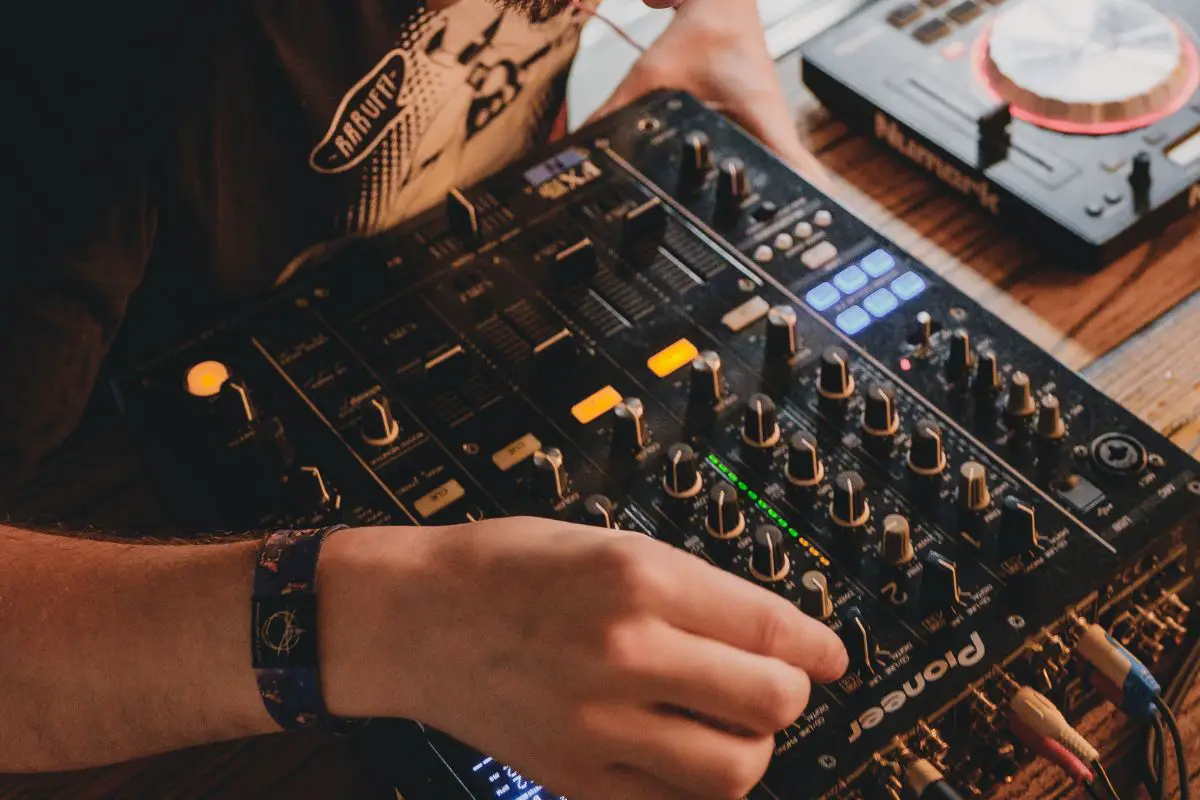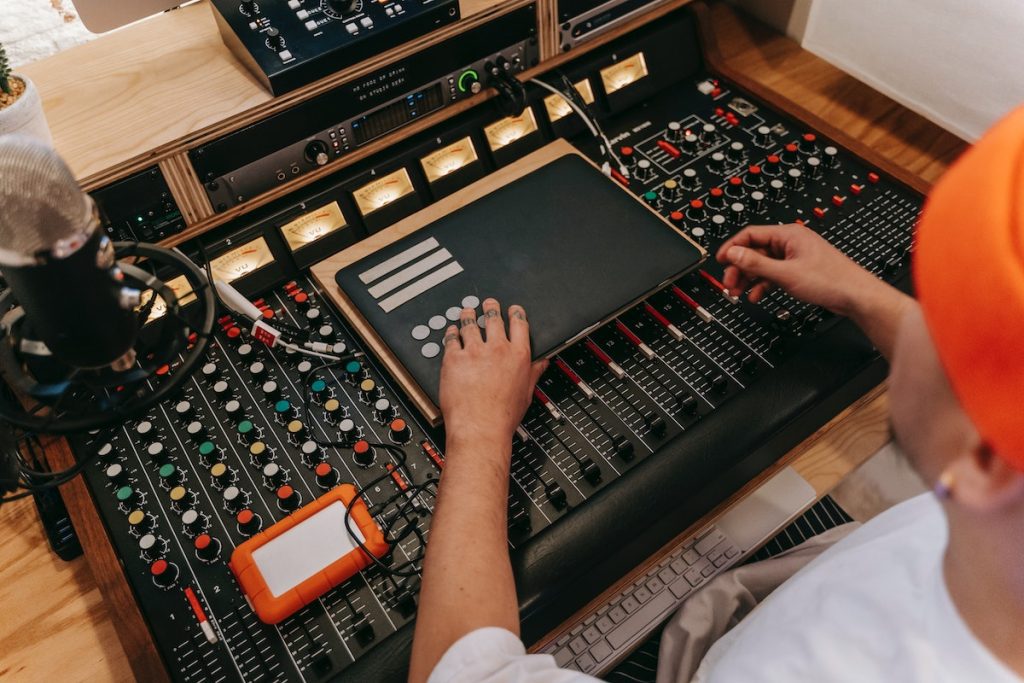Have you ever found yourself in the studio, cranking up the volume knob, and yet your sick beats just aren’t hitting as hard as you thought they would? Or maybe you’re in the middle of a fire jam session, but your guitar solo gets buried beneath the wall of sound.
Well, in the audio world, normalization can magically boost your sound to its loudest without distorting it, making sure your beats are heard loud and clear. Now you’re probably wondering, “What exactly is audio normalization? And when should I use it?” If you want to know the answers, keep reading to find out.
What is normalizing in audio? Normalizing in audio is the process of increasing the amplitude of your entire audio recording to the maximum level without altering its dynamic range or causing distortion.
How does normalizing work in music production?
When we normalize a track, we’re essentially giving it an equal opportunity to shine by adjusting its overall volume without altering its dynamic range or causing any unwanted distortion. It’s like giving every instrument its moment to shine!

When you hit that normalize button (or apply it manually), your music production software analyzes the entire waveform and calculates the highest peak level present. Then, it applies a gain adjustment to bring the highest peak up to the desired level, be it -0.1 dB or -1 dB, depending on your preference.
AKAI Professional MPK Mini MK3

AKAI Professional MPK Mini MK3
My first encounter with audio normalization
Let’s put this into perspective with a story from my early days as a music producer. I was working on a bouncy electronic dance track with pounding bass, shimmering synths, and crispy percussion. Everything sounded groovy, but when I played it back alongside some professional tracks, mine just didn’t have that same oomph. That’s when I learned about normalization and decided to give it a whirl.
Instantly, my bass kicked harder, my synths sparkled brighter, and my percussion cuts through the mix…
Using my trusty music production software, I applied normalization to my mix, setting the peak level to -0.3 dB. Instantly, my bass kicked harder, my synths sparkled brighter, and my percussion cuts through the mix like a samurai sword (figuratively speaking, of course). The overall impact was remarkable, as it brought balance to my track.
Why should you normalize your tracks?
Now that we’ve explored how normalization works, let’s dive into the juicy question: why should you bother normalizing your tracks in the first place? Well, let me tell you why normalization is essential when it comes to audio production.
- Achieve Consistent Volume: Normalizing your tracks ensures that they have a consistent volume level throughout. It’s like giving your listeners a smooth and pleasant listening experience, where they don’t need to constantly adjust the volume knob.
- Optimize for Various Playback Systems: Different devices and platforms have their own quirks when it comes to audio playback. By normalizing your tracks, you make sure they sound great across various systems, from headphones to car speakers and everything in between.
- Prevent Clipping and Distortion: Sometimes, in the heat of the creative process, we can unintentionally push the volume levels a bit too far, leading to clipping and distortion. Normalization helps reign in those wild peaks and ensures your tracks stay clean and distortion-free.
- Compete in the Loudness Wars: In today’s competitive music landscape, loudness matters. Normalization allows you to increase the perceived loudness of your tracks without compromising their dynamic range, helping your music stand out from the crowd.
Now, let’s take a moment to glance at a quick “Dos and Don’ts” data table to guide you through the process of normalizing your tracks effectively.
| Dos | Don’ts |
|---|---|
| Analyze the dynamic range | Over-normalize to the point of squashing |
| Set appropriate peak level | Normalize individual tracks in isolation |
| Listen critically and adjust | Neglect the impact on the overall mix |
| Use normalization as a tool | Rely solely on normalization to fix mix issues |
What’s the difference between normalizing and compressing?
When we normalize a track, we focus on adjusting the overall volume to a desired level while preserving the track’s dynamic range. The main goal is to ensure consistent volume across different tracks or sections within a track. Think of normalization as giving your audio a boost without altering its balance or dynamics.

Compression, on the other hand, is a dynamic processing technique that involves controlling the dynamic range of a track. It helps to even out the disparities between the loudest and softest parts of a recording. By reducing the dynamic range, compression brings the quieter elements forward and tames the peaks, resulting in a more controlled and polished sound.
To illustrate the difference, let’s imagine you’re working on a vocal track where the singer has a wide dynamic range, going from soft, intimate whispers to powerful belting. Here’s how normalization and compression would come into play:
- Normalization: You apply normalization to ensure the overall volume of the vocal track is consistent. This ensures that the soft whispers are audible and the belting parts don’t overpower the mix. Normalization helps create a balanced foundation for further processing.
- Compression: Now, it’s time to address the dynamic range. Compression steps in to control those wild peaks and gently bring up the softer parts of the vocal. By compressing the vocal track, you ensure a more even performance where the listener can hear every word and emotion without straining or being startled by sudden volume changes.
When should you avoid normalizing?
While normalization can work wonders in many situations, there are certain scenarios where you might want to think twice before reaching for that normalized button. So, let’s dive into the instances where avoiding normalization might be the right call.
- Extreme dynamics: If your audio has extremely wide dynamic variations that are essential to the artistic expression of the track, you may want to skip normalization. Examples could include a classical piece with delicate soft passages and explosive crescendos or a jazz performance with intimate solos and energetic improvisations. In such cases, the natural dynamic range is part of the charm, and normalizing might flatten the intended emotional impact.
- Intentional volume variation: Sometimes, intentional volume variation can enhance the creative intent of your audio. For instance, in an audio drama or podcast, you might have sections where the characters whisper or shout for dramatic effect. Normalizing these tracks would diminish the intended impact and undermine the storytelling.
- Mix balance considerations: If you’re working on a mix with multiple tracks and instruments, applying normalization to individual tracks in isolation might disrupt the delicate balance you’ve crafted. Each instrument plays a unique role in the mix, and normalizing them individually can disturb the intended relationship between them, resulting in an imbalanced final product.
- Pre-existing processing: If your audio has already undergone significant processing, such as heavy compression or limiting, applying normalization on top of that could introduce unwanted artifacts or cause the audio to become overly loud or distorted. In such cases, it’s best to evaluate the overall sound and consider if normalization is necessary or if other adjustments can achieve the desired result.
Advantages and disadvantages of audio normalization
Let’s take a closer look at the advantages and disadvantages of normalizing audio production. While normalization can be a valuable tool in your music-making arsenal, it’s essential to weigh its benefits against potential drawbacks.
Advantages of audio normalization
- Enhances Track Consistency: Normalization ensures a consistent volume level across your tracks, resulting in a more cohesive listening experience.
- Optimizes Playback on Different Systems: By normalizing your tracks, you can improve their compatibility and sound quality on various playback systems, such as headphones, speakers, and streaming platforms.
- Improves Perceived Loudness: Normalization allows you to increase the perceived loudness of your tracks without sacrificing their dynamic range, making them stand out in today’s competitive music landscape.
- Prevents Clipping and Distortion: By controlling the peak levels, normalization helps prevent clipping and distortion, ensuring a clean and distortion-free sound.
- Saves Time in the Mixing Process: Normalizing can be particularly useful during the initial stages of mixing, providing a balanced starting point for further adjustments and processing.
Disadvantages of audio normalization
- Loss of Dynamic Intention: Normalizing can potentially compromise the intended dynamic variations in your audio, particularly if extreme dynamics are essential for artistic expression.
- Impact on Mix Balance: Normalizing individual tracks without considering the overall mix balance can disrupt the desired relationship between different elements, leading to an imbalanced final product.
- Incompatibility with Pre-existing Processing: If your audio has already undergone significant processing, such as heavy compression or limiting, normalizing on top of that might introduce unwanted artifacts or cause the audio to become overly loud or distorted.
- Unsuitable for Intentional Volume Variation: If your audio requires intentional volume variation for storytelling or creative purposes, normalizing might undermine the impact of softer passages or louder moments.
- Potential Over-reliance: Relying solely on normalization to address volume issues without addressing the underlying mix and arrangement concerns may result in a band-aid solution rather than addressing the root causes.
If you want even more tips and insights, watch this video called “Audio 101: What is Normalization?” from the Tim Talks Audio YouTube channel.
Frequently asked questions (FAQ)
Do you still have questions about normalizing in audio? Below are some of the most commonly asked questions.
How does normalization affect the overall sound of my audio?
Normalization primarily adjusts the overall volume level of your audio without altering the dynamic range. It ensures consistent volume and can enhance the perceived loudness. However, it’s important to note that normalization alone won’t fix mix or arrangement issues. It’s best used as a starting point or a tool to achieve balanced levels.
Can normalization fix clipping or distortion in my tracks?
Normalization can help prevent clipping and distortion to a certain extent by controlling peak levels. However, if your audio is already heavily clipped or distorted, normalization alone might not be sufficient to address these issues.
It’s essential to address clipping and distortion at the source or consider additional processing techniques like audio restoration or manual editing.
Is normalization a substitute for proper mixing and mastering techniques?
Normalization is not a substitute for proper mixing and mastering techniques. While it can be a helpful tool, it should be used in conjunction with other audio processing techniques to achieve a polished and professional sound.
Mixing, mastering, and other processing steps play crucial roles in shaping the overall quality and character of your audio.
Conclusion
Now that we’ve explored the ins and outs of normalization, it’s time to embrace this tool with open arms (or ears). Did I cover everything you wanted to know? Let me know in the comments section below. I read and reply to every comment. If you found this article helpful, share it with a friend, and check out my full blog for more tips and tricks on audio production. Thanks for reading, and keep creating music that’s perfectly “normalized”!
Key takeaways
This article covered the topic of normalization in audio production. Here are some key takeaways:
- Normalization adjusts the overall volume level without altering the dynamic range.
- It enhances track consistency and optimizes playback on different systems.
- Normalization prevents clipping and distortion when used appropriately.
- It should be used in conjunction with other processing techniques and is not a substitute for proper mixing and mastering.
- Consider the specific characteristics of your audio and artistic intent before deciding whether to normalize.















